Interesting article regarding powerful range hoods
rhome410
13 years ago
Featured Answer
Sort by:Oldest
Comments (34)
User
13 years agolast modified: 9 years agocooksnsews
13 years agolast modified: 9 years agoRelated Discussions
Interesting article from NBC news - Low energy housing
Comments (41)Lol Marshall. This from The Times (London) is another example of benefits of govm't intervention. Perhaps the yuppie set will be required to install multiple solar panels for their multiple water heaters. November 09, 2004 Spain makes solar panels mandatory in new buildings By David Sharrock SPAIN wants to take advantage of its sunshine by making solar panels compulsory in new and renovated buildings  to save fuel costs and to improve the environment. Jose Montilla, the Industry Minister, has announced that from next year, anyone who intends to build a home will be obliged to include solar panels in their plans, with the aim of turning Spain from a straggler to a European leader in the use of renewable energy. With the price of oil rising above $50 a barrel (£27), solar energy could produce savings of at least Â80 (£50) a year on fuel to heat domestic water supplies per household, and reduce greenhouse gases, the Government said. But critics of the GovernmentÂs plans say that the installation of solar panels would increase construction costs by between Â1,100 and Â1,400 per dwelling. Property prices have doubled since 1999 as part of a housing boom in Spain which shows no signs of cooling. The new construction regulation will affect more than half a million new houses a year, if the current pace of construction is maintained. The Socialist Government, led by José Luis RodrÃguez Zapatero, the Prime Minister, is seeking a tenfold increase in the area of solar panels in use in Spain by the year 2010, from the present total of 581,000 sq metres. Spain lags far behind Germany, EuropeÂs current solar energy leader, where 5.4 million sq metres of solar panels are currently in use. But in spite of its low domestic usage, Spain is one of the worldÂs biggest manufacturers of solar panels. According to official estimates, installation of solar panels in 3.5 million dwellings built in the past five years in Spain would have yielded a fuel cost saving of Â245 million. Señor Montilla promised subsidies to encourage further take\-up of solar panels and to ease the financial pain of the new measure, but he did not give further details. A single two\-metre solar panel on the roof of a home can cut its water\-heating bills by up to 70 per cent a year, according to government estimates. Three years ago Seville, the Andalusian capital, introduced the same measure which the Government now intends to adopt nationwide....See Moreneed a larger, more powerful range hood
Comments (2)I have a 30" Imperial under cabinet range hood that's around 1000 cfm with dual blowers. They do may one 24" deep in that width. It took about two years for me to find a range hood that met my specifications as I was looking for long-term reliability. Imperial is manufactured in California, has a 7 year warranty on their better quality hoods, is made of marine grade stainless steel so will not corrode or rust, led lighting, larger 8" ducts, baffles, remote control switches (optional), and continuously variable light and blower controls (no discreet power levels). Packaging and shipping were excellent. Furthermore, their office personnel were always available to answer my many questions, including details regarding installation. When a electrical wiring question came up during installation (due to my not wanting the blower to come on automatically at a certain temperature), Imperial put their engineer on the phone to tell the installer which wiring to disconnect. Ops, just saw your rear duct and the size specification. You would need to call Imperial about your duct size as they may recommend a larger duct for the power you are seeking. You should post on GW Appliances forum also regarding that duct sizing issue for the power you want. I can't recall about the rear vent, but Imperial seems to do just about every modification possible, so check the details through their online vendors or call the company....See Moreneed a larger, more powerful range hood
Comments (8)Bob bob, you are concentrating a lot on the exhaust fan itself, but it sounds like you already know your ducting is a problem. Is the entire duct from the hood to the outside a rectangular 10 x 3/25"? Well, you could buy the best exhaust fan in the universe, but the narrowness of 3.25" will never, ever, allow you to have efficient exhaust. It must be very loud too. The laws of physics says that 600 cfms pushed through a narrow opening is going to create a lot of noise. I am concerned you will spend a lot on a new hood, and undergo a project, because you blame your hood, when the real problem may not be your hood. The duct is 3.25"? I would spend the money on running an 8" diameter duct from your hood to the outside. If you cannot, I am afraid that a new hood will not change your exhaust experience by a significant amount. You said you want it to be "like being in a commercial kitchen/restaurant" - the next time you go to a restaurant, check out its exhaust exit out of the roof - it will be huge....See MoreInteresting article regarding the Ring.
Comments (54)I don't know about anyone else, I don't have my ring doorbell inside my house, in my back yard. It videos anyone coming to my door. Doesn't see the street nor my driveway (wish it did but I have a wall on the side of my entry. I wouldn't have cameras inside my house but have been thinking about cameras in my back yard. The ring camera is only triggered by movement. It goes on when someone moves within the short range of the camera. It does not go on with cars on the street or people walking on the street. Even if it did, that is public space. The Country could have cameras on the telephone poles, for all I know. Frankly there are cameras everywhere. I just paid a 'red-light ticket' my husband got by making a left on a steady red light...$158.00. He swears the turn signal was yellow. I went online and viewed the video and it was clearly red. Guilty. I guess you could call that a privacy issue? Another point. I read the article. Who is Gizmode? I never heard of them. . A simple Google search describes the website, Gizmodo as: " Gizmodo (/ɡɪzˈmoʊdoʊ/ giz-MOH-doh) is a design, technology, science and science fiction website. It was originally launched as part of the Gawker Media network run by Nick Denton, and runs on the Kinja platform. Gizmodo also includes the subsite io9, which focuses on science fiction and futurism. " Hummm, a Science Fiction website. Interesting.... The bottom line, the camera is not inside my house recording 'whatever.' It is at your front door. It records people coming to your door. If you are involved in something shady, maybe you wouldn't want anyone to see who comes to your door. From my research, they cannot share anything with the police unless you give permission (privacy laws). I paid $100.00 for a one of the best items I ever spent money on. I like getting alerts when I'm not home, I like seeing who is ringing my doorbell. I like getting an alert when a package is left at the door. Anyone who comes to my door would be visible from my windows if I looked out. I don't see a difference between my eyes or the doorbell camera. Jane...See Morerhome410
13 years agolast modified: 9 years agoideagirl2
13 years agolast modified: 9 years agoJohn Liu
13 years agolast modified: 9 years agorhome410
13 years agolast modified: 9 years agoartemis78
13 years agolast modified: 9 years agoUser
13 years agolast modified: 9 years agopinch_me
13 years agolast modified: 9 years agorhome410
13 years agolast modified: 9 years agoUser
13 years agolast modified: 9 years agochiefneil
13 years agolast modified: 9 years agobostonpam
13 years agolast modified: 9 years agorhome410
13 years agolast modified: 9 years agoideagirl2
13 years agolast modified: 9 years agoartemis78
13 years agolast modified: 9 years agoartemis78
13 years agolast modified: 9 years agoUser
13 years agolast modified: 9 years agobilly_g
13 years agolast modified: 9 years agokatyde
13 years agolast modified: 9 years agoBuehl
13 years agolast modified: 9 years agojakkom
13 years agolast modified: 9 years agoformerlyflorantha
13 years agolast modified: 9 years agoBuehl
13 years agolast modified: 9 years agobreezygirl
13 years agolast modified: 9 years agoJoshCT
13 years agolast modified: 9 years agocooksnsews
13 years agolast modified: 9 years agoplllog
13 years agolast modified: 9 years agoUser
13 years agolast modified: 9 years agohomechef
13 years agolast modified: 9 years agoartemis78
13 years agolast modified: 9 years agomorgne
13 years agolast modified: 9 years agodavidro1
13 years agolast modified: 9 years ago
Related Stories

KITCHEN APPLIANCESWhat to Consider When Adding a Range Hood
Get to know the types, styles and why you may want to skip a hood altogether
Full Story
KITCHEN DESIGNWhat to Know When Choosing a Range Hood
Find out the types of kitchen range hoods available and the options for customized units
Full Story
5 Stunning Modern Range Hoods
Today's kitchen range hoods can look like sleek sculptures. Here's what to look for when you go shopping for one
Full Story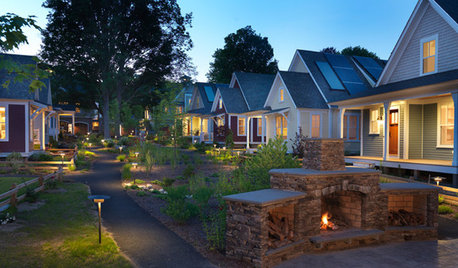
COMMUNITYSimple Acts: The Unsung Power of a Good Neighbor
There are many ways to be a good neighbor, and they're often easier than you think
Full Story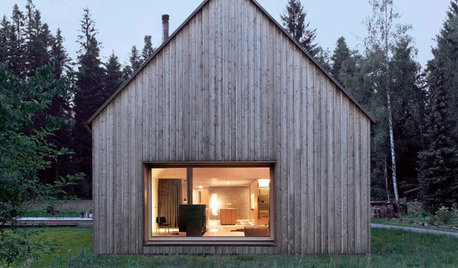
MOST POPULARA Few Words on the Power of Simplicity
An architect considers a pared-down approach to modern home design
Full Story
LIFEHow to Prepare for and Live With a Power Outage
When electricity loss puts food, water and heat in jeopardy, don't be in the dark about how to stay as safe and comfortable as possible
Full Story
GREEN BUILDINGOff the Grid: Ready to Pull the Plug on City Power?
What to consider if you want to stop relying on public utilities — or just have a more energy-efficient home
Full Story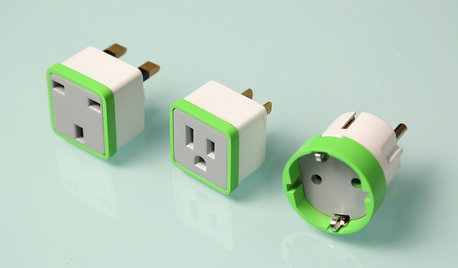
HOME TECHPlug Into Home Power Monitors That Pay for Themselves
Stop throwing away money on wasted electricity with help from new monitors that work with your phone or computer
Full Story
KITCHEN DESIGNHow to Find the Right Range for Your Kitchen
Range style is mostly a matter of personal taste. This full course of possibilities can help you find the right appliance to match yours
Full Story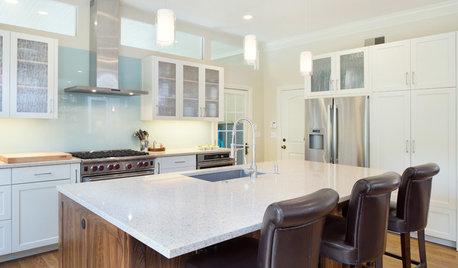
KITCHEN DESIGNModern Storage and Sunshine Scare Away the Monster in a Kansas Kitchen
New windows and all-white cabinetry lighten a kitchen that was once dominated by an oversize range hood and inefficient cabinets
Full Story


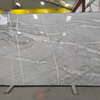
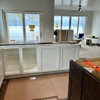

kaseki